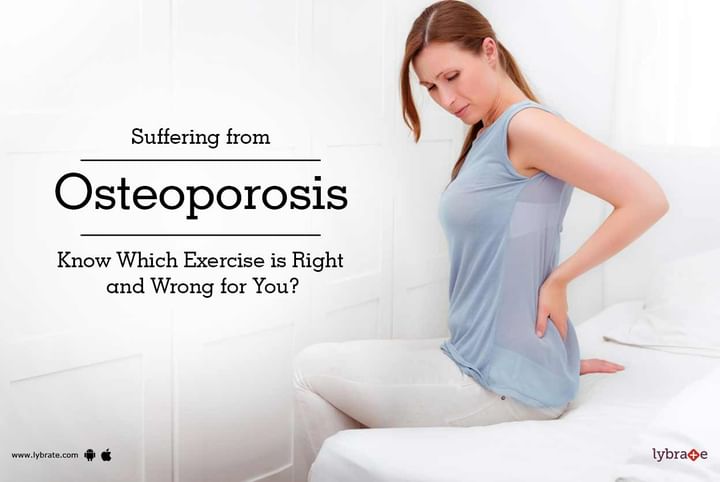Suffering from Osteoporosis - Know Which Exercise is Right and Wrong for You?
Osteoporosis wreaks havoc in many senior citizens, especially women. This is a disorder that systematically weakens the bone and can fracture the spine and the hip. If not treated early, it poses a serious threat to mobility. While medicine is a prerequisite to treating this condition, exercise goes a long way in helping patients of osteoporosis. Regular exercise can improve balance and strengthen the muscle. This being said a doctor should be consulted for a fitness assessment and bone density test before going ahead with any exercise routine.
What is the right exercise for you?
Exercises are recommended depending on the degree of osteoporosis a person is suffering from. Some exercises may not be suitable for a person while some can greatly help. It is therefore suggested that a doctor or physiotherapist is consulted before starting any exercise. Here is a list of exercise that doctors often suggest:
- Strength training: Strength training aims at strengthening the spine and other muscles. It includes the usage of free weights and lifting own body weight. In case the exercise involves the usage of weight machines, utmost care should be taken to ensure that the spine does not get twisted. Resistance training, on the other hand, should be designed in such a way that it fits the tolerance and ability to cope up.
- Flexibility exercises: When the joints are allowed to go through the range of motion, it helps in muscle function. Stretching, for instance, should only be done when the muscle is warmed up. Care should be taken that stretching is done gently which is devoid of any bouncing. The spine should not be flexed. Any exercise that demands to bend towards the waist should also be avoided. An experienced physiotherapist should be able to suggest which stretching exercise is suitable for patients with osteoporosis.
- Aerobic training: Aerobic training necessarily means that the bone supports the body weight. This exercise helps the bone from mineral loss and is good for body balance strength and flexibility. Some aerobics that can be easily performed by patients with osteoporosis include dancing, stair climbing, cycling and walking. These exercises also help in blood circulation and cardiovascular diseases.
- Exercises you must avoid: High-impact body activity exercises such as jogging, jumping and running should be strictly avoided in order to avoid bone fracture and weaken muscle. Unlike exercises with controlled movements, these exercises can twist the spine and cause severe immobility in movement.
- Twisting: For patients with osteoporosis, an exercise that involves forward bending resulting the waist to come down should be avoided. Exercise such as this can cause compression fractures leading to restriction in physical movement for a temporary to longer duration. Any sort of bending and twisting, therefore, should be avoided.



+1.svg)
